
India: EV-centred Auto Expo 2025 to host multiple global and Indian debuts
Tata Motors
India’s leading electric car manufacturer Tata Motors will likely have the widest showcase of electric cars at Auto Expo 2025. The company already offers six EVs and plans to expand the line-up to at least nine models by 2026. It will unveil its new flagship EV – the Harrier.ev. The compact SUV is comparable to Volkswagen’s ID.4 in size, but is derived from an ICE model – the Harrier. Tata introduced this model as a near-production concept in 2023 and plans to launch the final version by March this year.
The Harrier.ev will be the first BEV application based on the D8 platform, which JLR adapted from Ford’s EUCD platform and Tata Motors later modified for India. JLR itself has no plans to utilise the old platform for EVs. According to a report from Team-BHP, Tata Motors will offer the Harrier.ev with a 75 kWh battery pack and bi-directional charging functions like vehicle-to-load (V2L) and vehicle-to-vehicle (V2V). Unlike any other current Tata model, including ICE ones, the company will give AWD capability on the Harrier.ev, possibly as an option.
Furthermore, Tata Motors may unveil the road-ready version of the Tata Sierra.ev concept from 2023, as it plans to bring the final model to showrooms in late 2025. Reinventing the company’s first passenger vehicle, the iconic Sierra from 1991, the Sierra.ev will be a sub-compact SUV. It will have squat proportions, a wide and planted stance, and, most importantly, distinctively designed glasshouse and B- and C-pillars that help it look similar to its three-door predecessor. According to an Autocar India report, Tata Motors will continue the distinctiveness on the inside, offering a luxury car-like 2+2 seating layout, albeit as an option. The company plans to sell an ICE variant of the all-new Sierra as well and should launch it in quick succession.
Another show-stopper at the Tata Motors booth will be the first model under the upcoming Avinya series of bespoke electric cars. The company presented it initially as a concept in 2022 and should introduce it in a near-production version at Auto Expo 2025. It plans to introduce the inaugural model in its final form in 2026. Tata Motors plans to design Avinya models from the ground up exclusively as EVs and develop them based on EMA, JLR’s upcoming dedicated EV platform. JLR is developing EMA with 800-volt capability, but Tata Motors wants to use 300-400-volt systems for the Avinya series to reduce the cost and price them affordably.
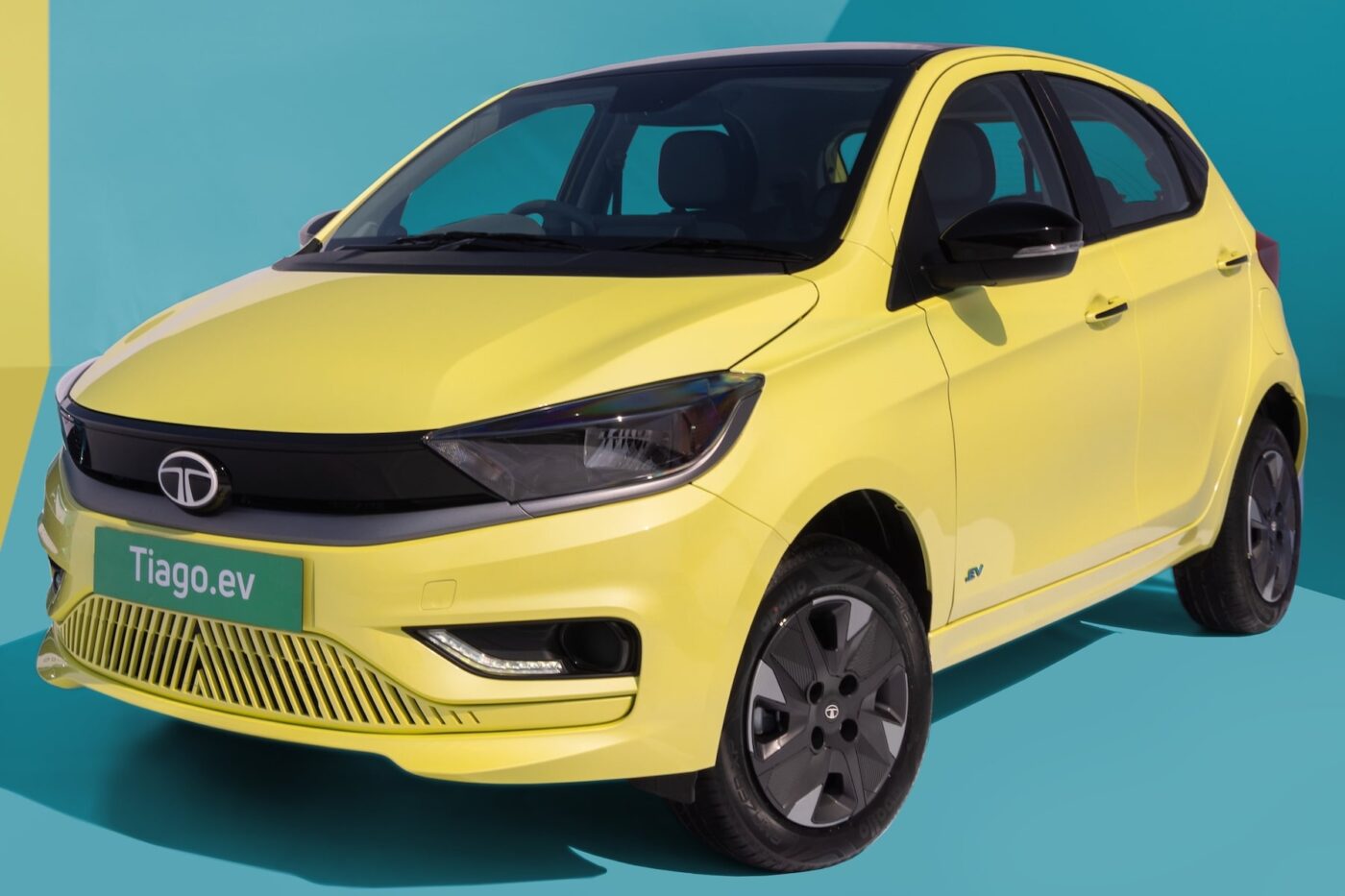
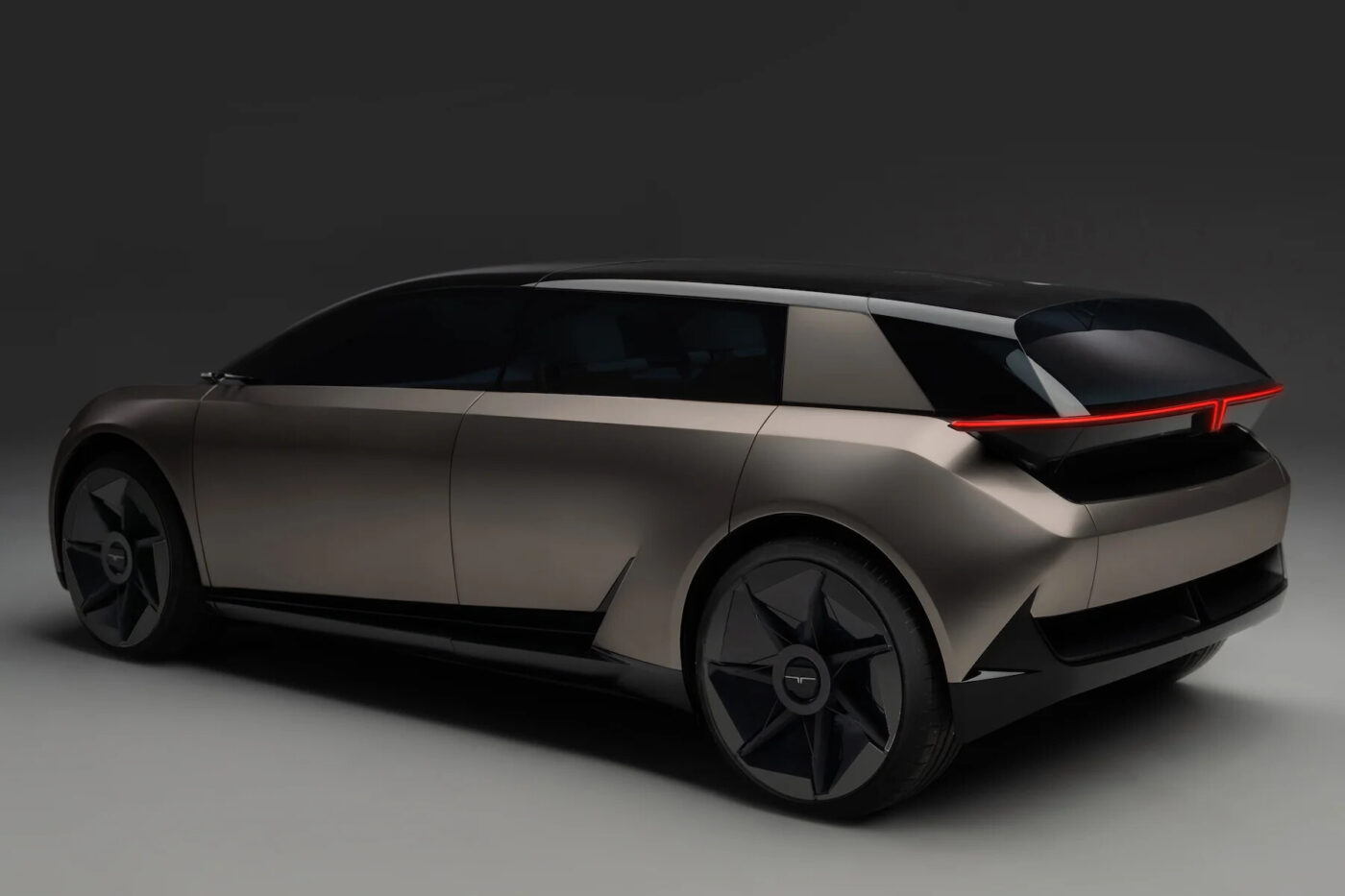
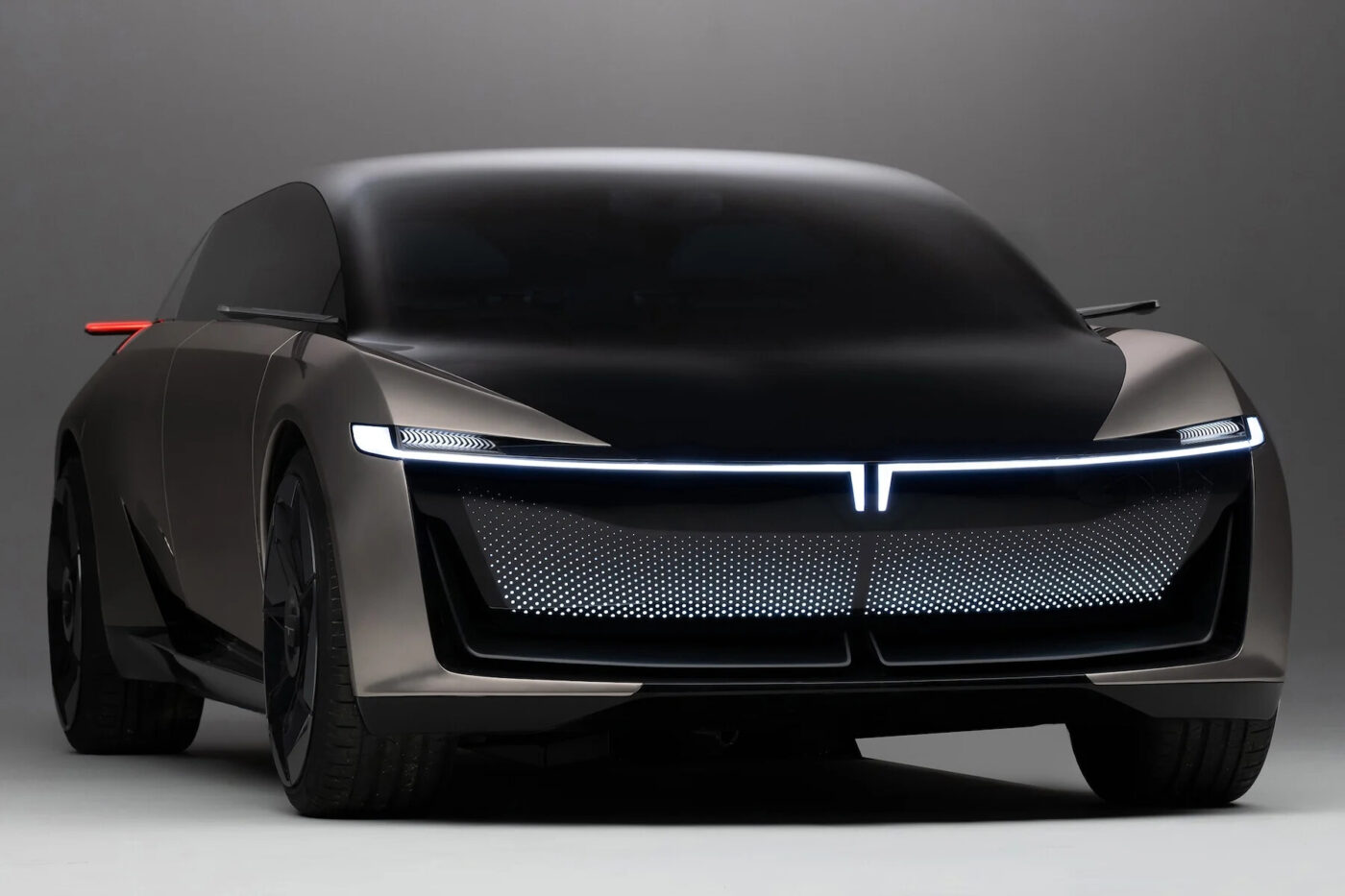
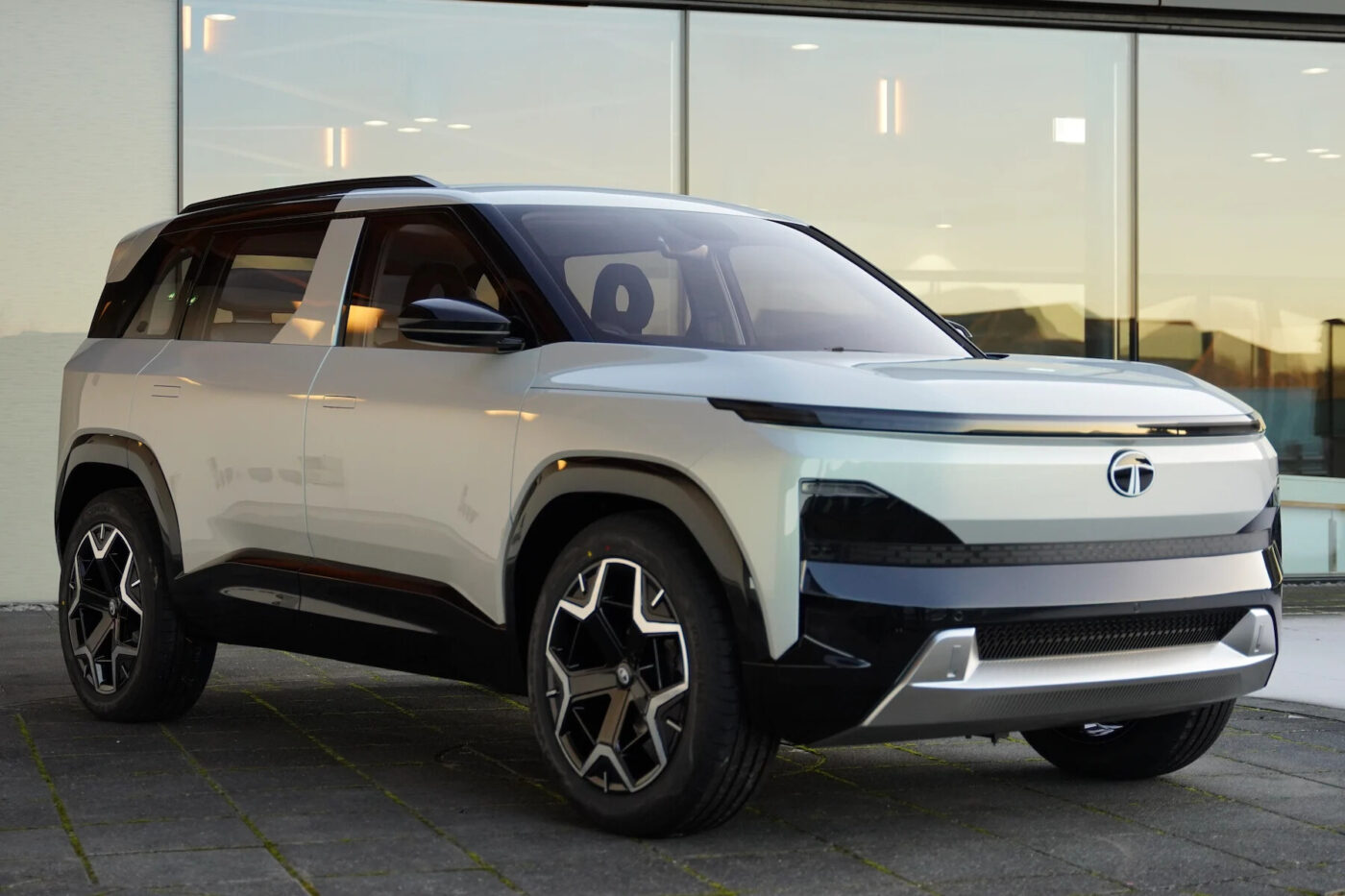

Last week, Tata Motors gave the Tiago.ev a facelift, and it will likely showcase the updated model at Auto Expo 2025. The facelifted Tiago.ev has a revised frontend with a cleaner faux upper grille, a more upright brand logo, revised LED headlamps, and a new, body-coloured lower grille featuring opposite-faced slanted bars. On the sides, the “.EV” badge is at the bottom of the front door panels instead of the front quarter panels, while at the rear. Up top is a new shark-fin antenna instead of a whip-type one.
Inside, the refreshed Tiago.ev’s features changes like a two-spoke steering wheel with an illuminated brand logo, a rounded instrument binnacle with a 4-inch multi-information display, and a 10.25-inch touchscreen infotainment system with wireless Apple CarPlay and Android Auto compatibility. The updated model offers enhanced safety with an HD reverse parking camera. Tata Motors has yet to disclose the complete specifications, but it has confirmed that the new Tiago.ev travels up to 293 km on a full charge, 18 km longer than the old model.
Mahindra
Mahindra sells only one EV at the moment – the XUV400, but by 2026, it plans to build a comprehensive line-up of seven electric models. The company will showcase several of its upcoming EVs at Auto Expo 2025.
The BE 6 (initially called Mahindra BE 6e) is a sub-compact SUV-coupe with a radical design, a minimalist interior, and the best specifications to date in an Indian EV. Sporting a rear-mounted motor producing up to 210 kW and 380 Nm of torque, it accelerates from 0 to 100 kph in just 6.7 seconds and achieves a top speed of over 200 kph. Its battery pack takes less than 20 minutes for a 20-80% fast-charging session and delivers a range of up to 683 km on a full charge – the highest for any locally manufactured EV.
Mahindra offers the BE 6 with a frunk, a panoramic roof with ambient lighting, automatic parking, variable-ratio steering, and many more features that are new for locally manufactured, mass-market electric cars in India. The company offers it for a starting price of 18.90 lakh Indian rupees (around 21,000 euros) and expects to start its deliveries in early March.
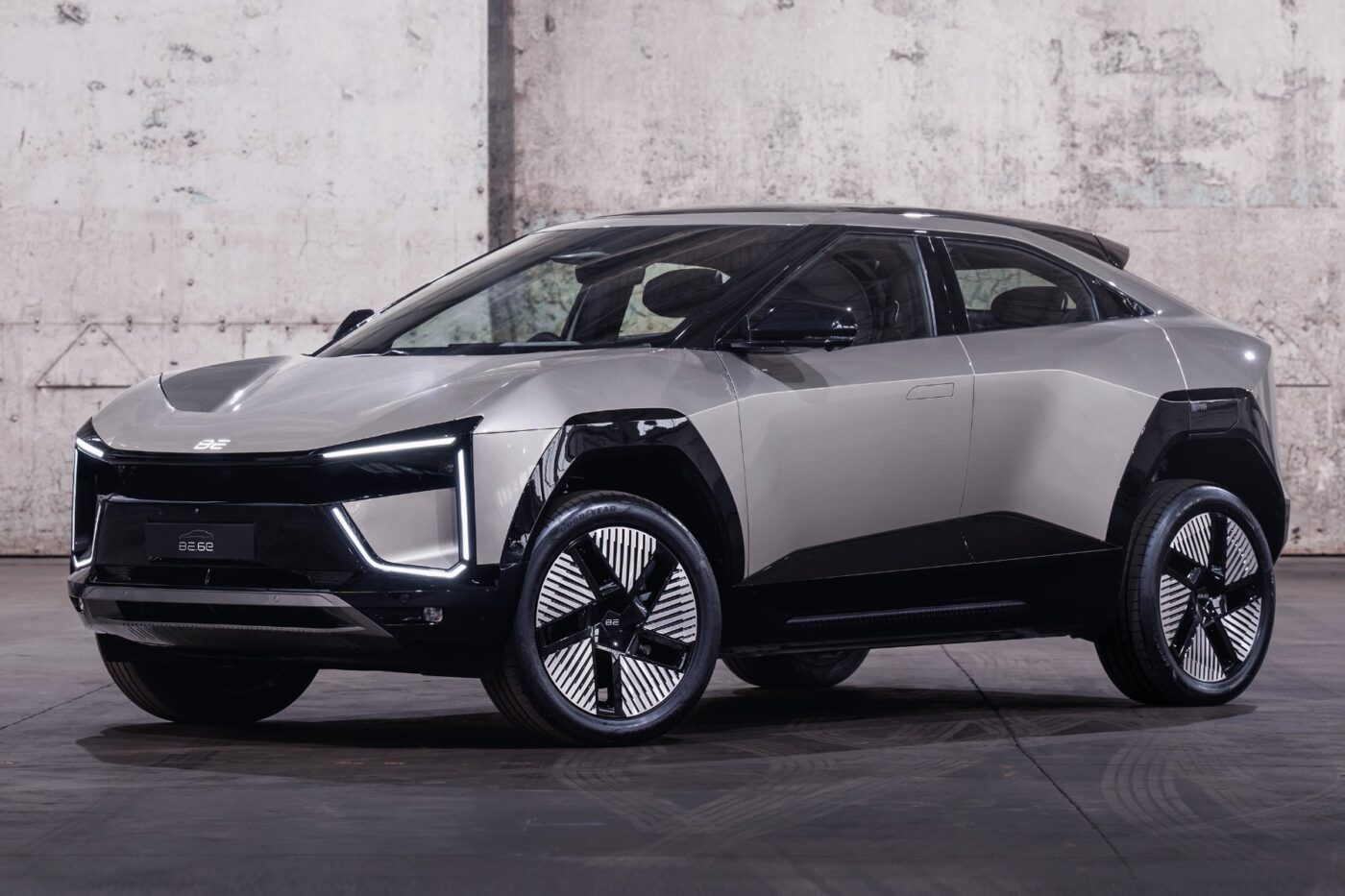
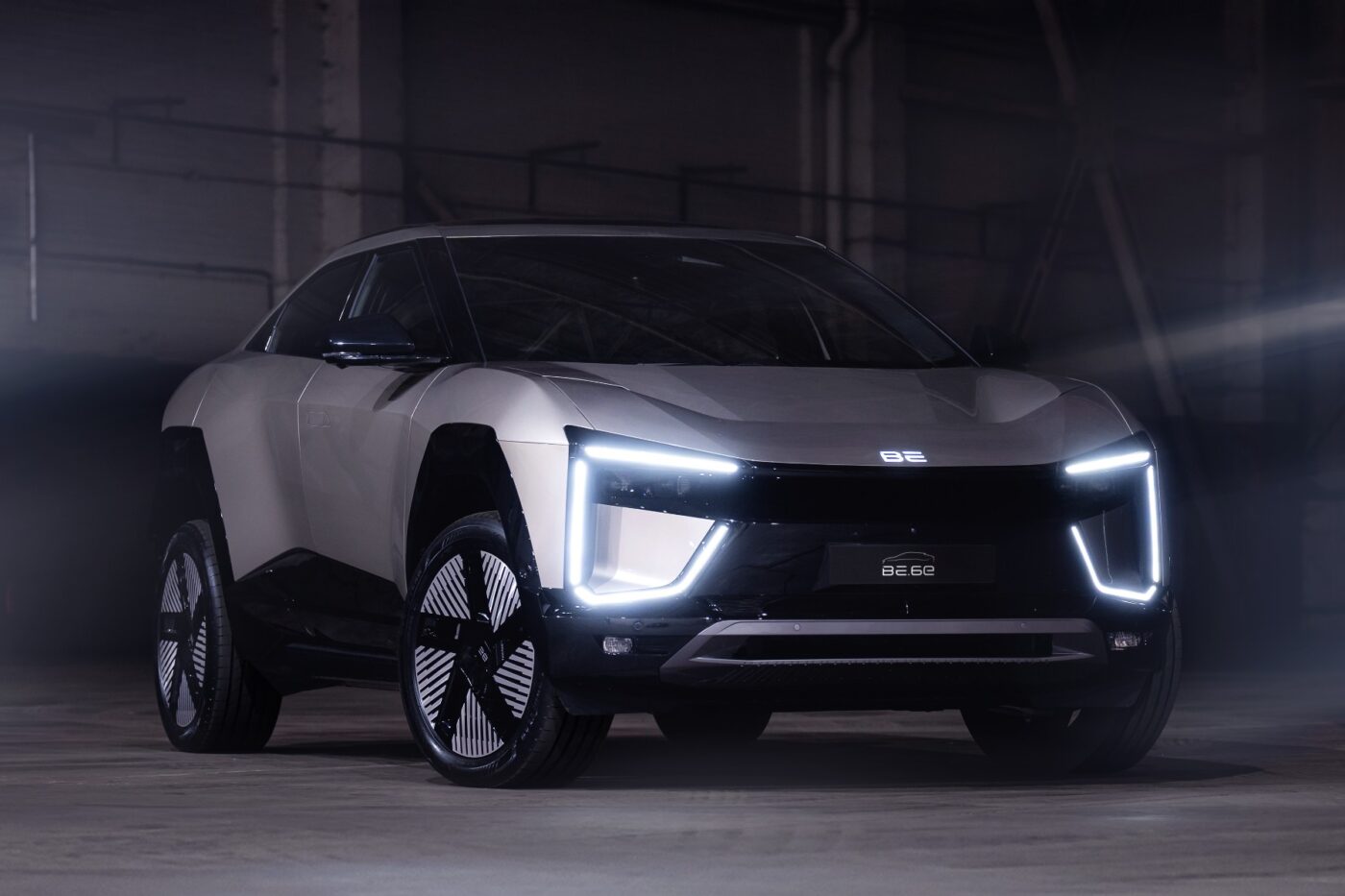
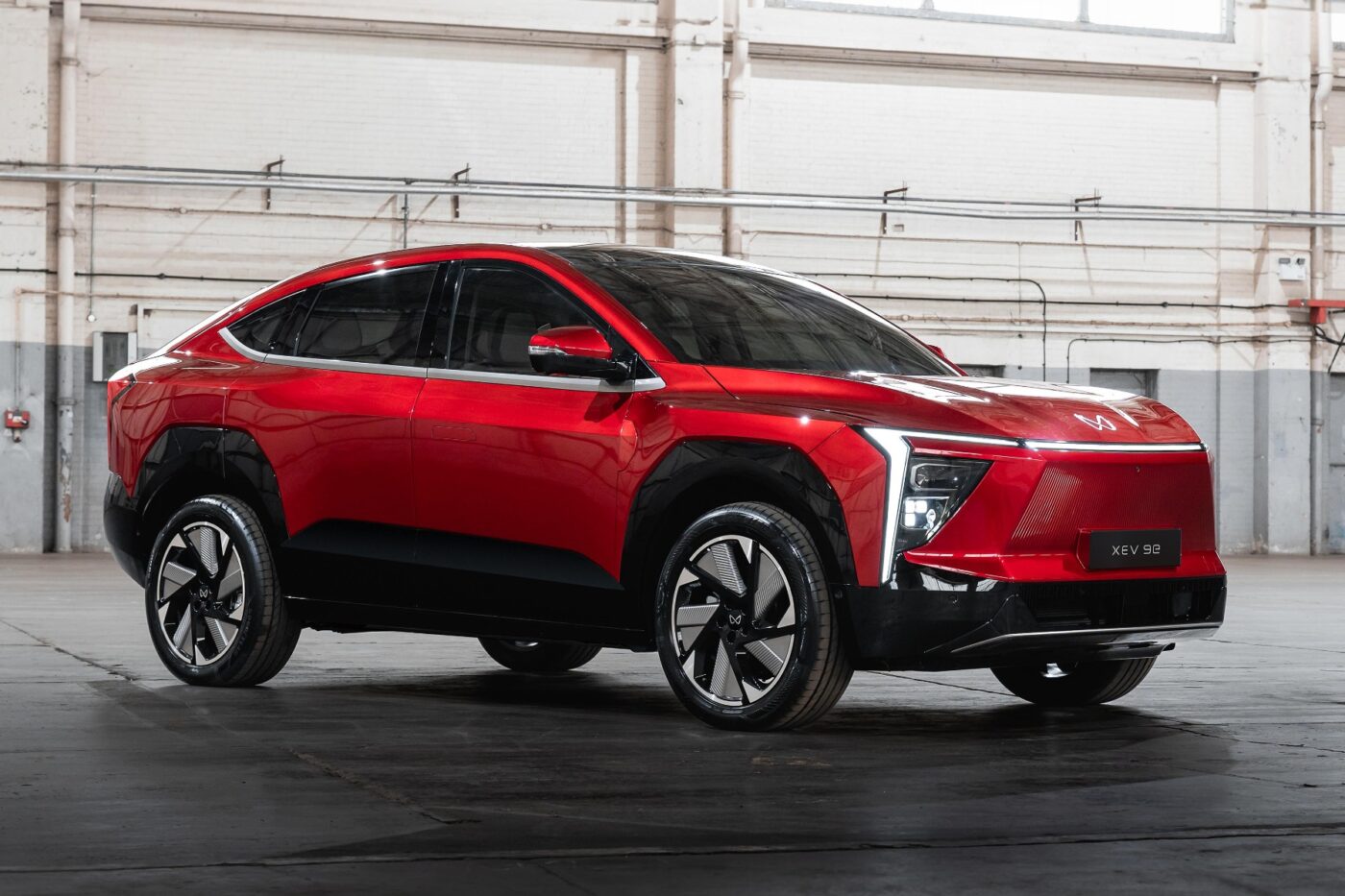
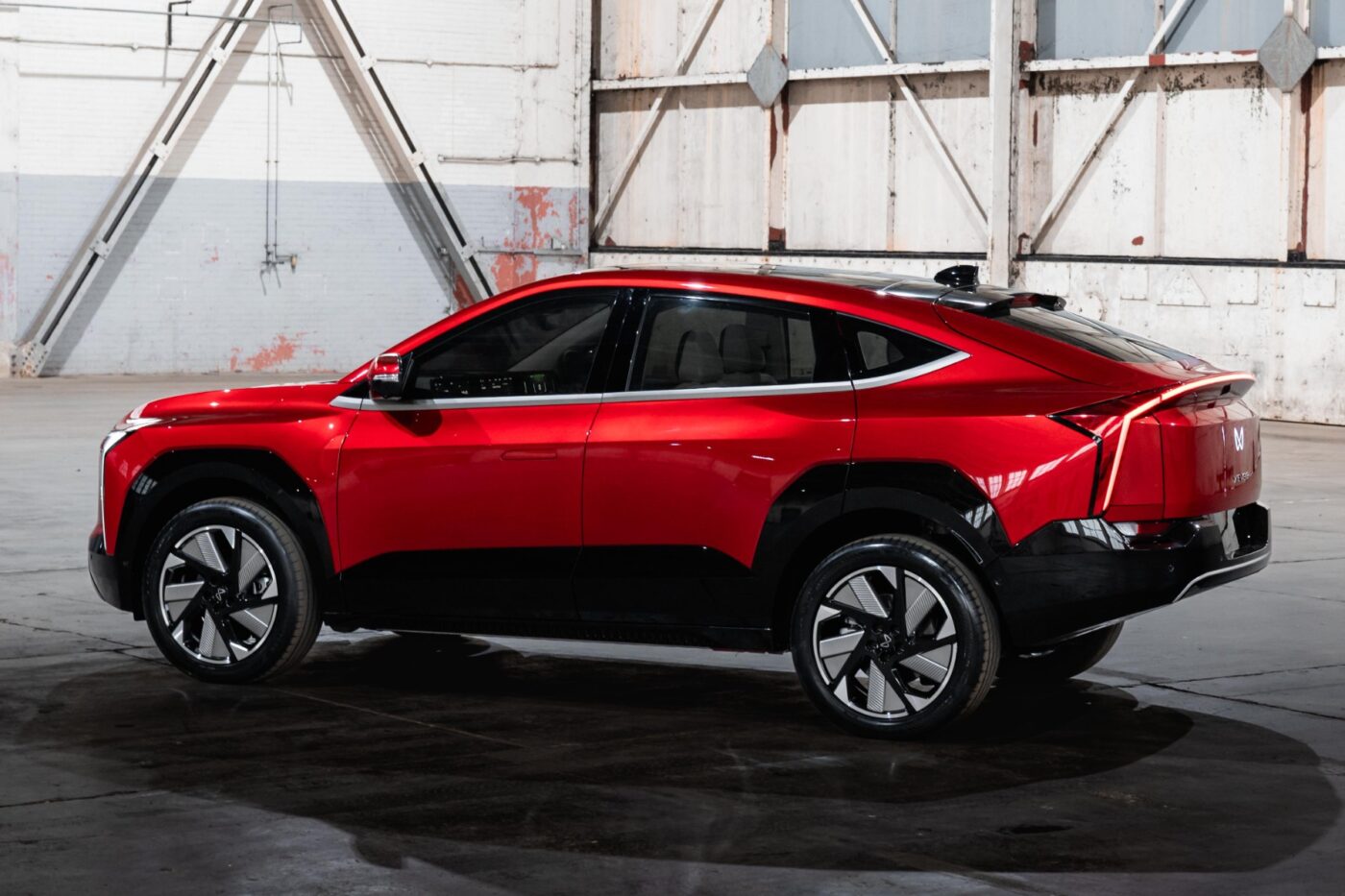



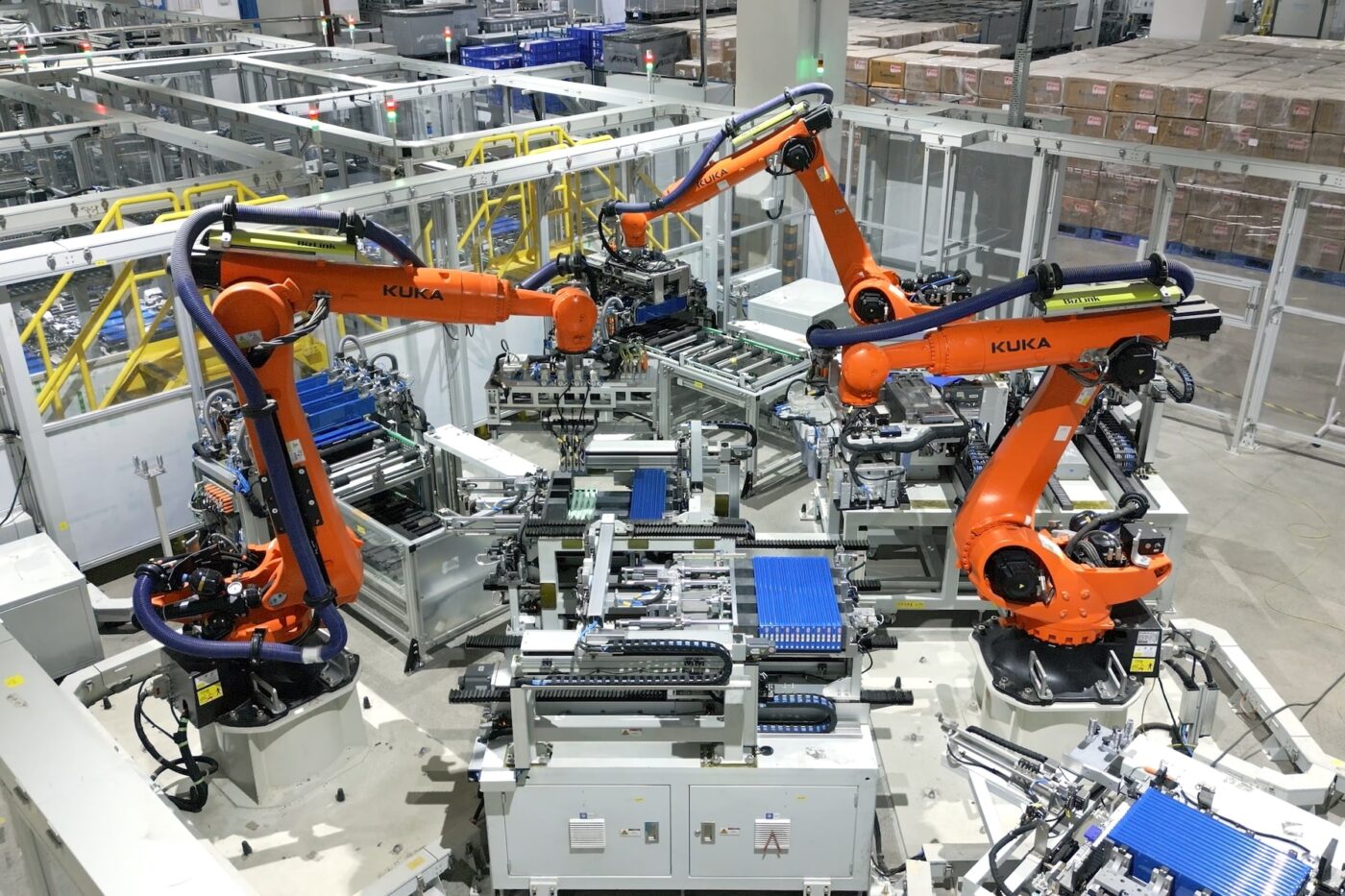
The XEV 9e is a mid-size SUV coupé with the same powertrains and battery packs as the BE 6. However, thanks to its bigger dimensions, it offers a more spacious interior and a bigger boot and frunk. Along with a distinctive exterior, it has a more upscale interior featuring a trio of 12.3-inch displays on the dashboard – a first for a car manufactured car in India. The XEV 9e zips from 0 to 100 kph as quickly as 6.8 seconds and travels up to 656 km on a full charge. Mahindra offers it at 21.90 lakh Indian rupees (around 24,600 euros) onwards and expects to begin its deliveries in early March.
The XEV 7e, an upcoming SUV counterpart of the XEV 9e, will give Mahindra customers a pure electric alternative to the XUV700 ICE model. The company will distinguish it from the XEV 9e with a conventional body style and a more family-oriented interior that includes three rows of seats. Mahindra will likely launch the XEV 9e as one of the first locally manufactured three-row EVs in the second half of the year.
Maruti Suzuki
Maruti Suzuki, India’s largest carmaker, originally aimed to introduce its first EV in 2020 but later deferred the plan to 2025 anticipating a slow growth for demand in the first half of the decade. Now, the company will finally showcase its first EV at Auto Expo 2025.
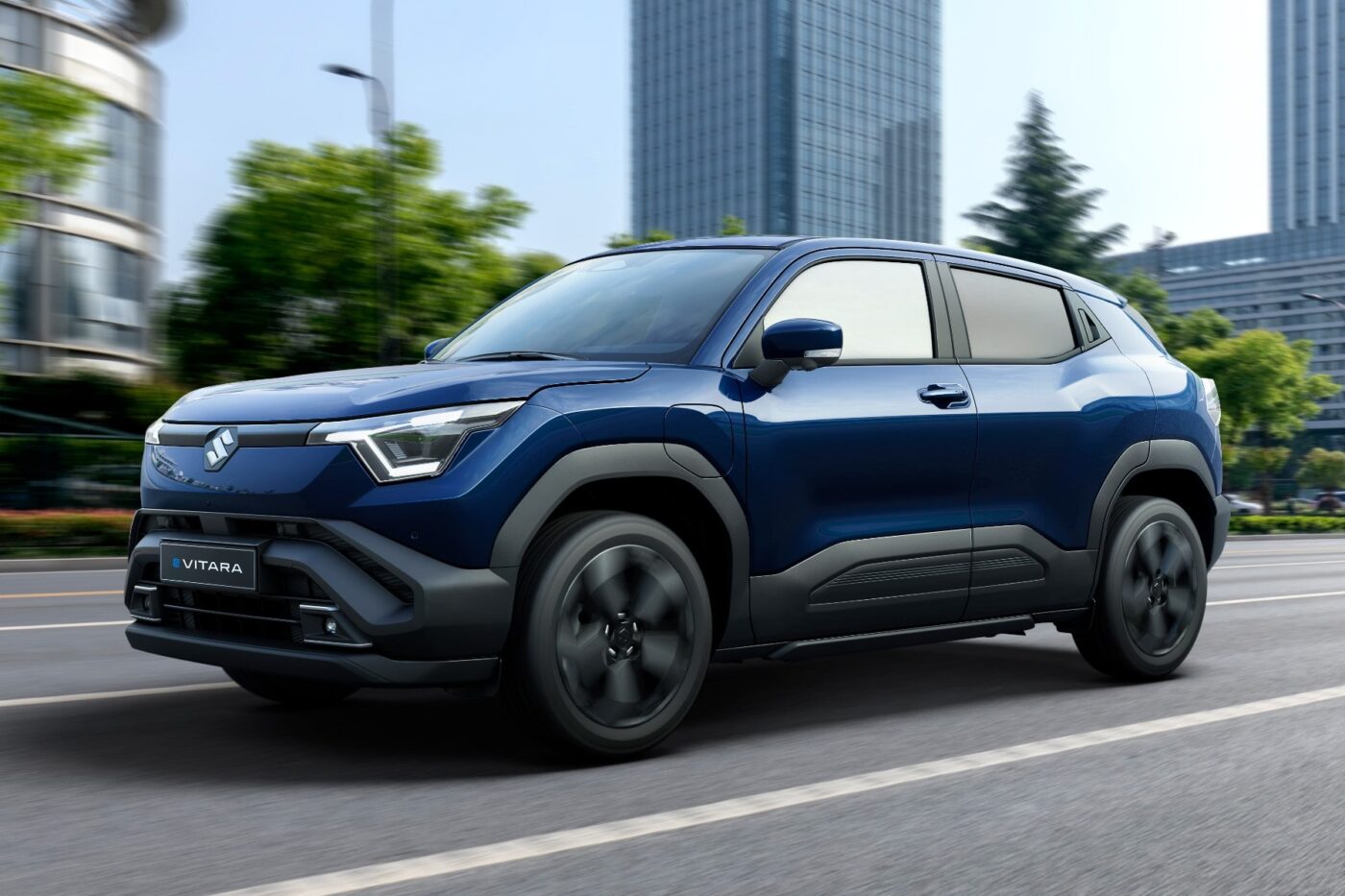
The e Vitara is a sub-compact EV featuring an authentic SUV character, which Indian customers cherish as much as the trusted Maruti Suzuki badge. Maruti Suzuki plans to manufacture it in 106 kW and 128 kW FWD variants and a 135 kW AWD variant for the global markets, but it has yet to reveal which of them it will offer in India. The 106 kW FWD variant has a 49 kWh LFP battery pack, while the 128 kW FWD and 135 kW AWD variants share a 61 kWh LFP battery pack. The company will likely start its domestic sales in March.
Hyundai
After selling imported EVs in minuscule numbers for over five years, Hyundai is finally stepping up its game with a locally manufactured model that it can sell in a high volume. Along with new electric cars for private customers, the South Korean automaker could unveil concepts of its electric last-mile mobility vehicles, including a three-wheeler, announcing its foray into commercial vehicles.
Hyundai plans to launch the Creta Electric, a sub-compact SUV like Maruti Suzuki’s e Vitara and Tata Motors’ Sierra.ev, as its first proper made-in-India EV at Auto Expo 2025. The company derived it from an ICE model, the Creta, to keep its costs low and bring it quickly to the market, although it did modify the exterior and interior a little for distinctive styling and more practicality. It plans to make approximately 24,000 units of the new EV annually, as per another Autocar India report.
The Creta Electric line-up consists of standard-range and long-range variants with 42 kWh and 51.4 kWh LFP battery packs, respectively. The 42 kWh unit delivers a range of 390 km, while the 51.4 kWh unit runs out of juice at 473 km. Both variants have only one, front-mounted motor, generating 99 kW in the former and 126 kW in the latter. The long-range variant accelerates from 0 to 100 kph in 7.9 seconds.
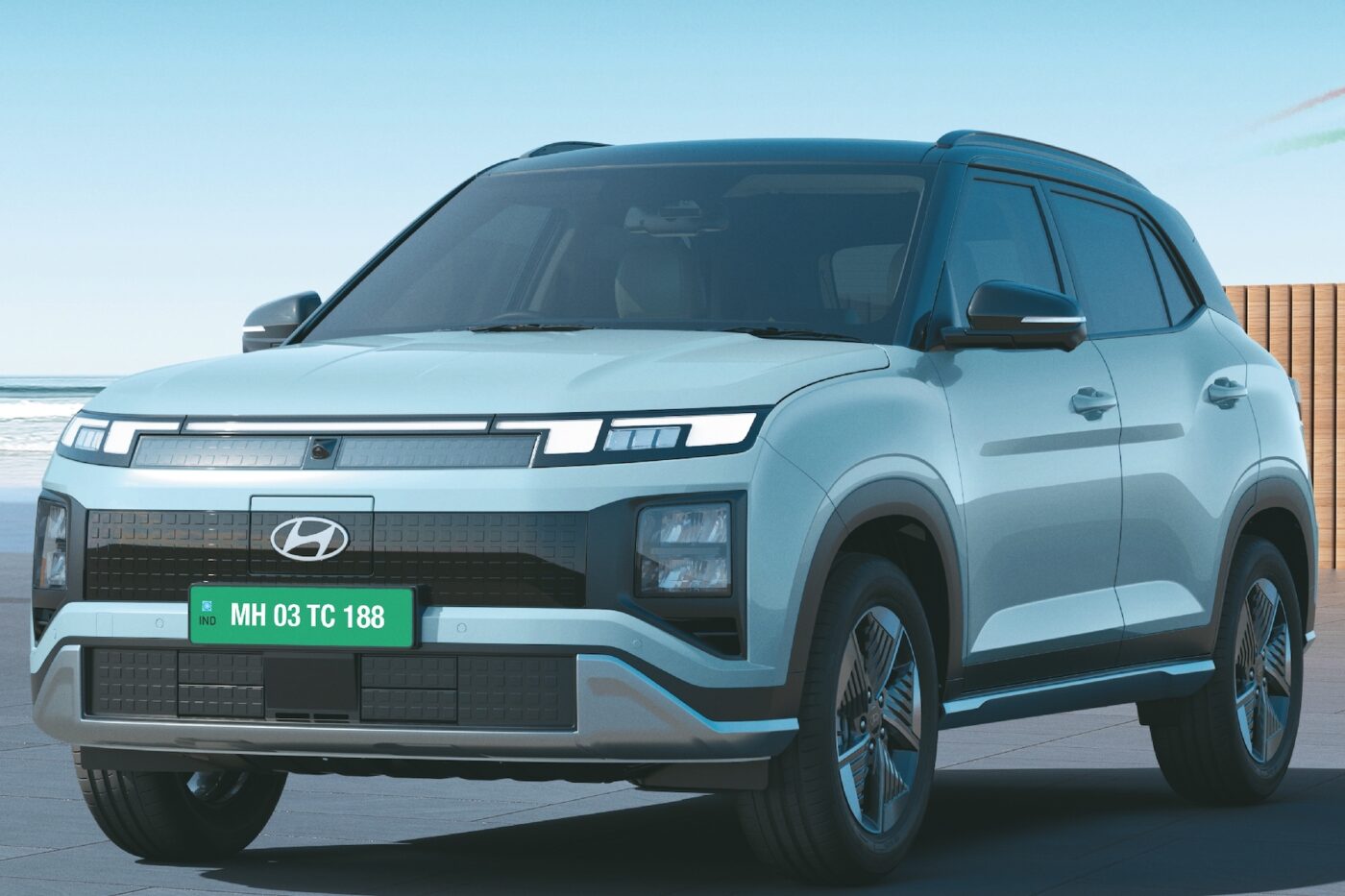
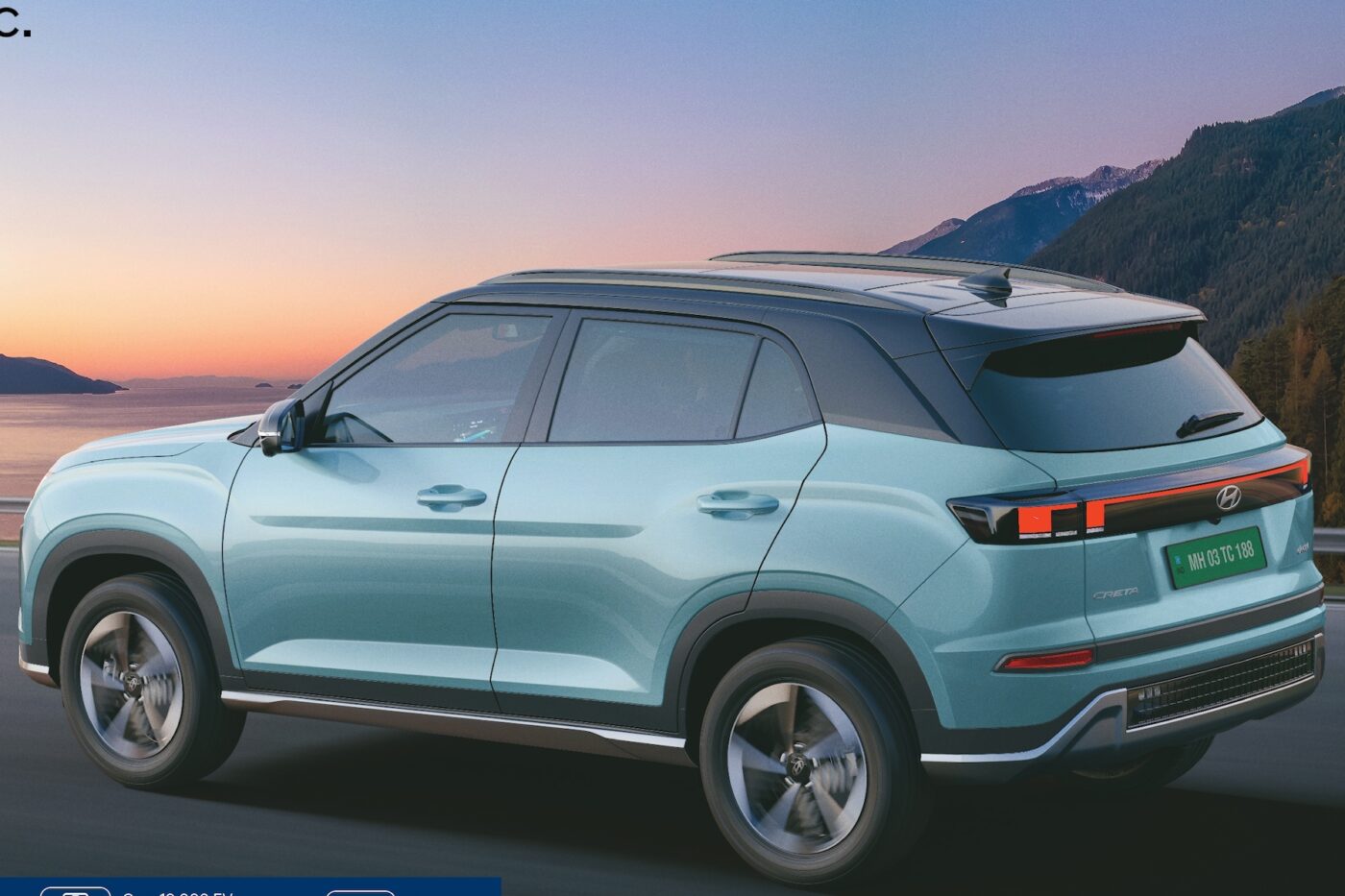

Hyundai is working on a new electric micro SUV (codename: HE1i) featuring a design similar to the Inster (Casper EV) but based on a ‘K’ version of the E-GMP dedicated EV platform for India. According to a moneycontrol report, the company will unveil a concept version of this upcoming EV at Auto Expo 2025.
Auto Expo 2025 will likely also host the Indian debut of the Ioniq 9, Hyundai’s new flagship EV. Kia already sells its corporate cousin, the EV9, in India, but Hyundai has yet to decide on whether it will offer its all-electric three-row SUV in the country. The company will likely use the event to gauge market response.
Kia
Kia also plans to launch its first locally manufactured, mass-market EV in India this year – the Carens EV. However, the company will likely save it for a later date. For now, it will continue relying on imported electric models.
The carmaker will utilise Auto Expo 2025 for the Indian debut of the facelifted EV6, which it launched in other markets last year. The company swapped the EV6’s 58.0 kWh and 77.4 kWh battery packs with 63.0 kWh and 77.4 kWh units, respectively, with the mid-cycle refresh. It also introduced the new connected car Navigation Cockpit (ccNC) operating system with a slick new UI, OTA update support, and wireless Apple CarPlay and Android Auto compatibility. The new model is more refined as well, thanks to upgraded frequency-selective suspension dampers and improved noise insulation. Kia will likely launch the new EV6 with the 84 kWh battery pack in India later this year.
JSW MG Motor
JSW MG Motor, the joint venture between China’s SAIC Motor and India’s JSW Group, sells EVs under India’s most popular brand – MG. The company plans to expand its EV range from currently three to five models soon, with the addition of the Cyberster and M9 (Maxus Mifa 9). It will showcase both upcoming models at Auto Expo 2025 and sell them through a new chain of MG Select premium dealerships.
JSW MG Motor India plans to launch the M9 in March, so it will likely display the model in the final specifications at Auto Expo 2025. The full-size electric MPV is available in six- and seven-seat versions in other markets, and the Indian JV will likely sell it in the latter. It packs features like power sliding doors, two sunroofs, front seats with memory, massage, ventilation, and heating functions, and VIP second-row seats with electrically adjustable leg rest and massage, ventilation, and heating functions. A 90 kWh NMC battery pack powers a 180 kW/350 Nm motor on the rear axle and delivers a WLTP range of up to 435 km.
And the manufacturer plans to announce the prices of the MG Cyberster at Auto Expo 2025. It will offer the new sports car in the top-of-the-line twin-motor AWD configuration that hits 0 to 100 kph in 3.2 seconds and achieves a top speed of 200 kph. The Cyberster features an electric fabric roof, electric scissor doors, 20-inch alloy wheels, a trio of dashboard displays (10.25-inch central and 7-inch side units) in the cockpit area, a 7-inch touchscreen infotainment system, and an 8-speaker Bose sound system.
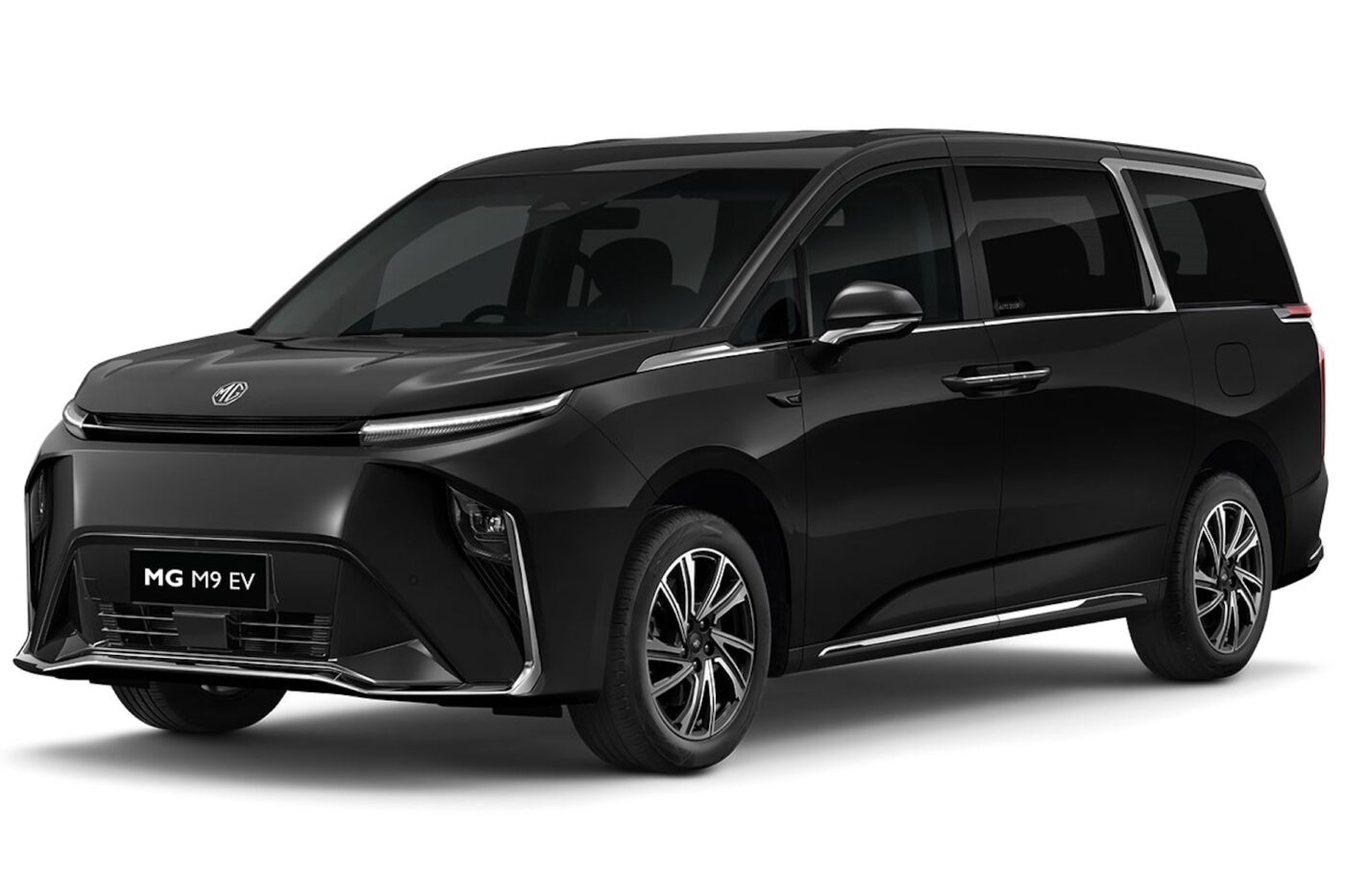
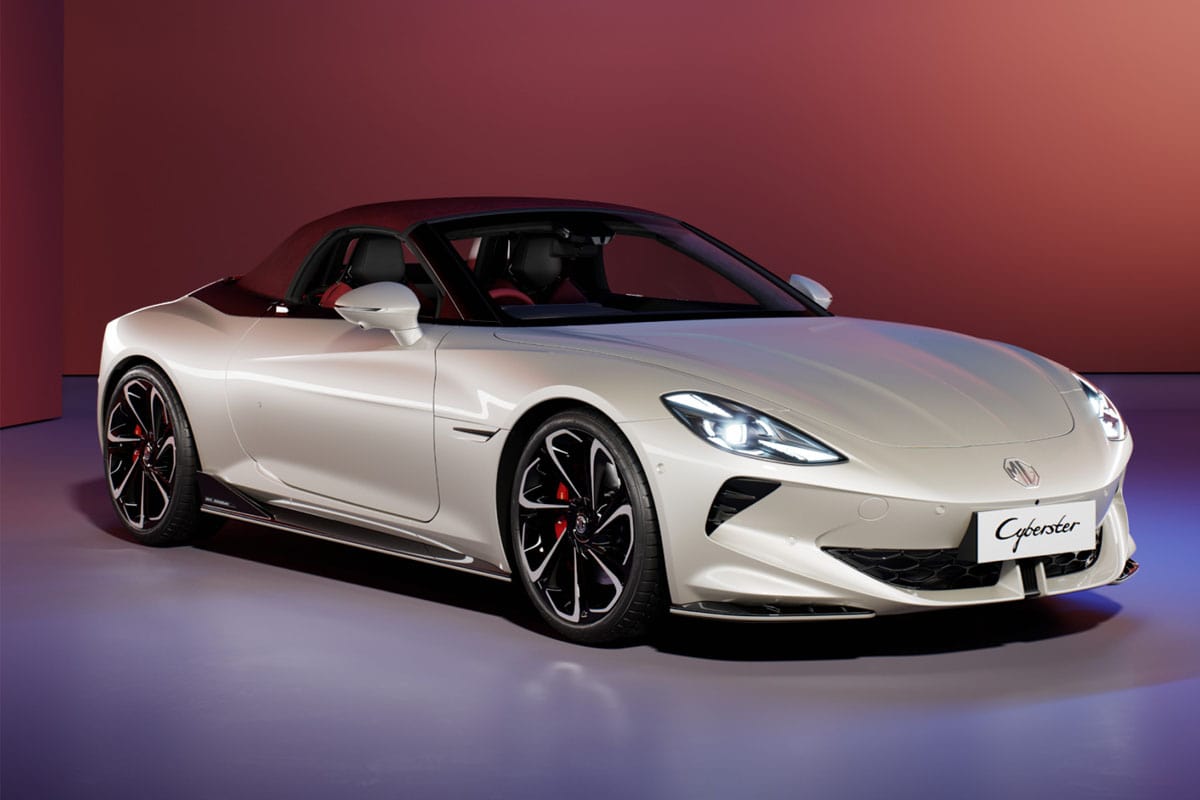
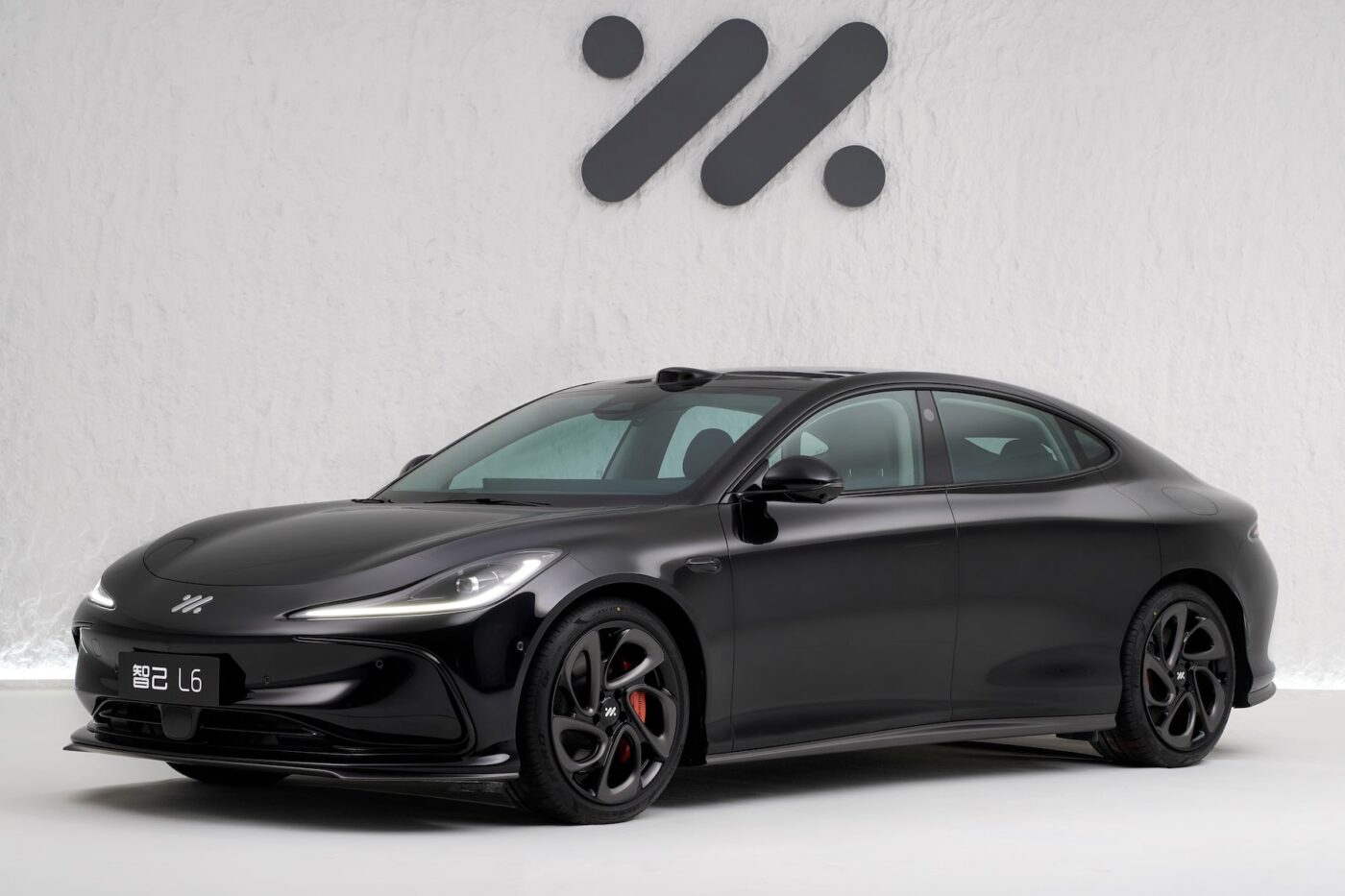
Another cross-brand EV at JSW MG Motor India’s Auto Expo 2025 booth will be IM Motors’ L6, an executive sedan like BYD’s Han EV. IM Motors is a joint venture between three Chinese companies – SAIC Motor, Alibaba, and ZhangJiang Hi-tech. JSW MG Motor India has yet to confirm if it plans to launch the L6.
In China, the L6 is available in multiple configurations, targeting efficiency, range-focused customers, and performance enthusiasts. The electric sedan delivers a CLTC range of up to 850 km, zips from 0 to 100 kph as quickly as 2.8 seconds, and achieves a top speed of up to 268 kph. Moreover, its battery pack takes as little as just 17 minutes for a 10-80% charging session. A Car News China report suggests that IM Motors will introduce a 123.7 kWh semi-solid-state battery pack that weighs 621 kg and gives the car a significantly higher CLTC range of over 1,002 km soon.
Skoda
Skoda initially planned to launch the Enyaq as its first EV in India in 2024 but later postponed it, deciding to launch the facelifted model this year directly. However, the Czech automaker revealed the new Enyaq just earlier this month and might not showcase it at Auto Expo 2025. That said, it will bring a new EV to the show.
Skoda plans to use the Auto Expo 2025 stage to showcase the Elroq to the Indian audience for the first time. The Czech automaker is considering the smaller, cheaper, and more stylish sibling of the new Enyaq for India, although it has no plans to locally manufacture it and launch it as a high-volume EV. At best, the company may import it in a semi-knocked down (SKD) or completely knocked down kit (CKD) form and locally assemble it to save on tariffs. It may launch the Elroq in India sometime in 2026, about a year after the new Enyaq.
BYD
Chinese automaker BYD has no plans to start manufacturing EVs in India anytime soon and will continue relying on low-volume imports. The company will likely showcase two new EVs at Auto Expo 2025.
It will display the Sealion 7 in India for the first time at Auto Expo 2025 and plans to launch it in the country by March. The mid-size SUV-coupe is the fourth model embodying the Ocean Aesthetics design philosophy, following the Dolphin, Seal, and Seal U. In Europe, the company offers the car with features like a 15.6-inch rotating touchscreen infotainment system, a 128-colour ambient lighting system, a panoramic sunroof, and a 12-speaker Dynaudio sound system. The sporty crossover offers superb performance, hitting 0 to 100 kph in just 4.5 seconds and achieving a top speed of up to 215 kph. Depending on the configuration, it delivers a WLTP range of up to 502 km.
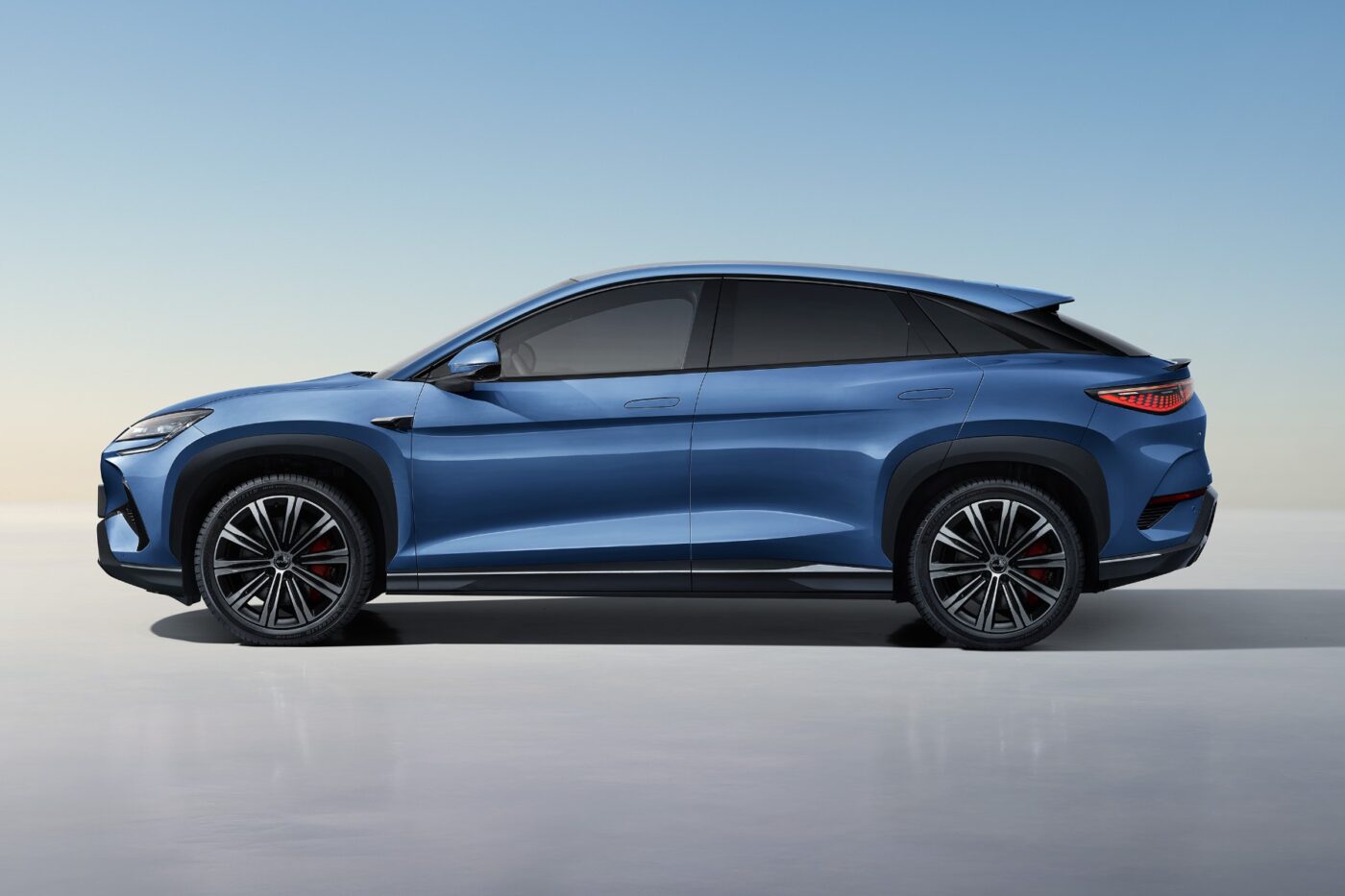
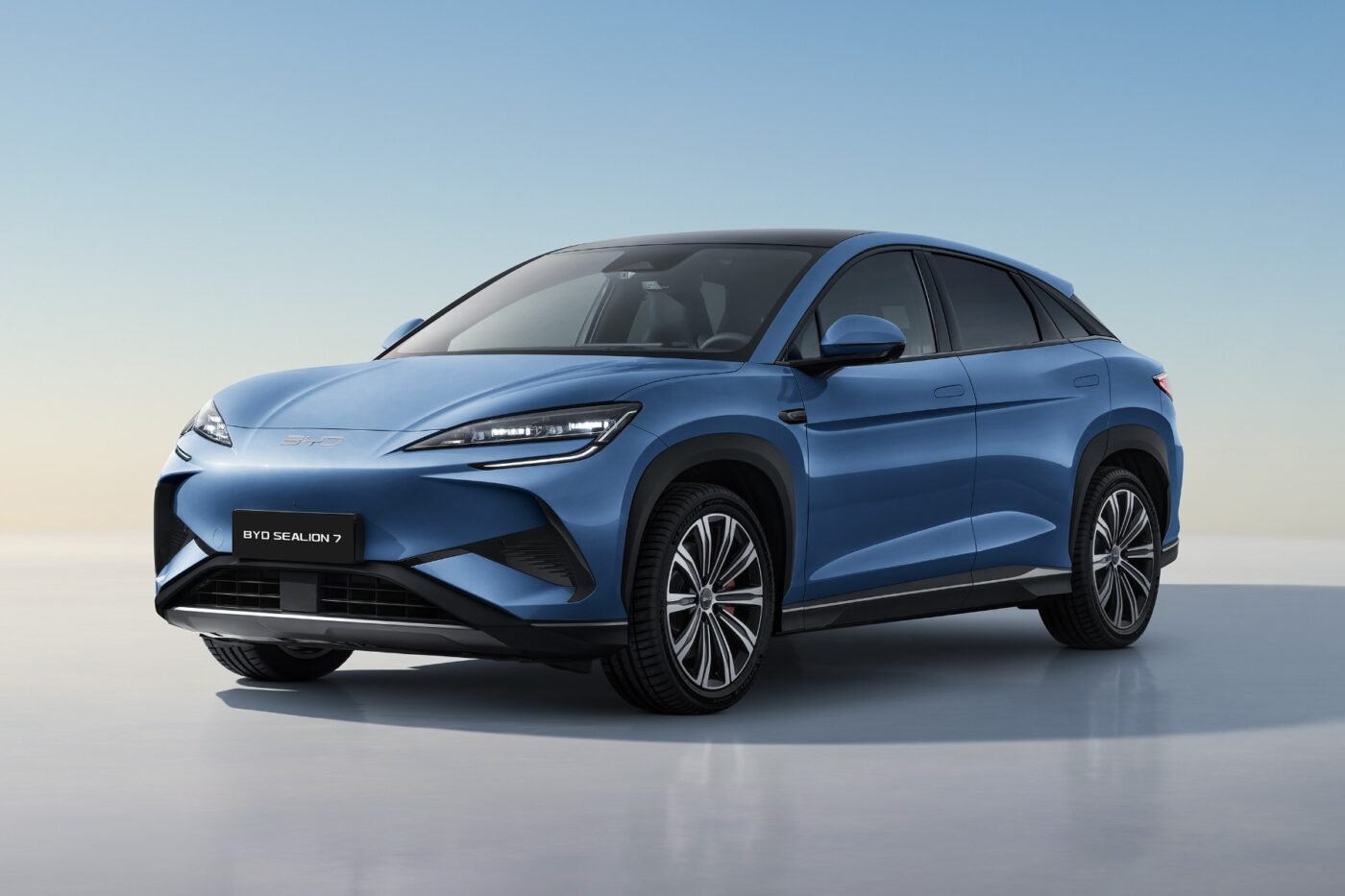
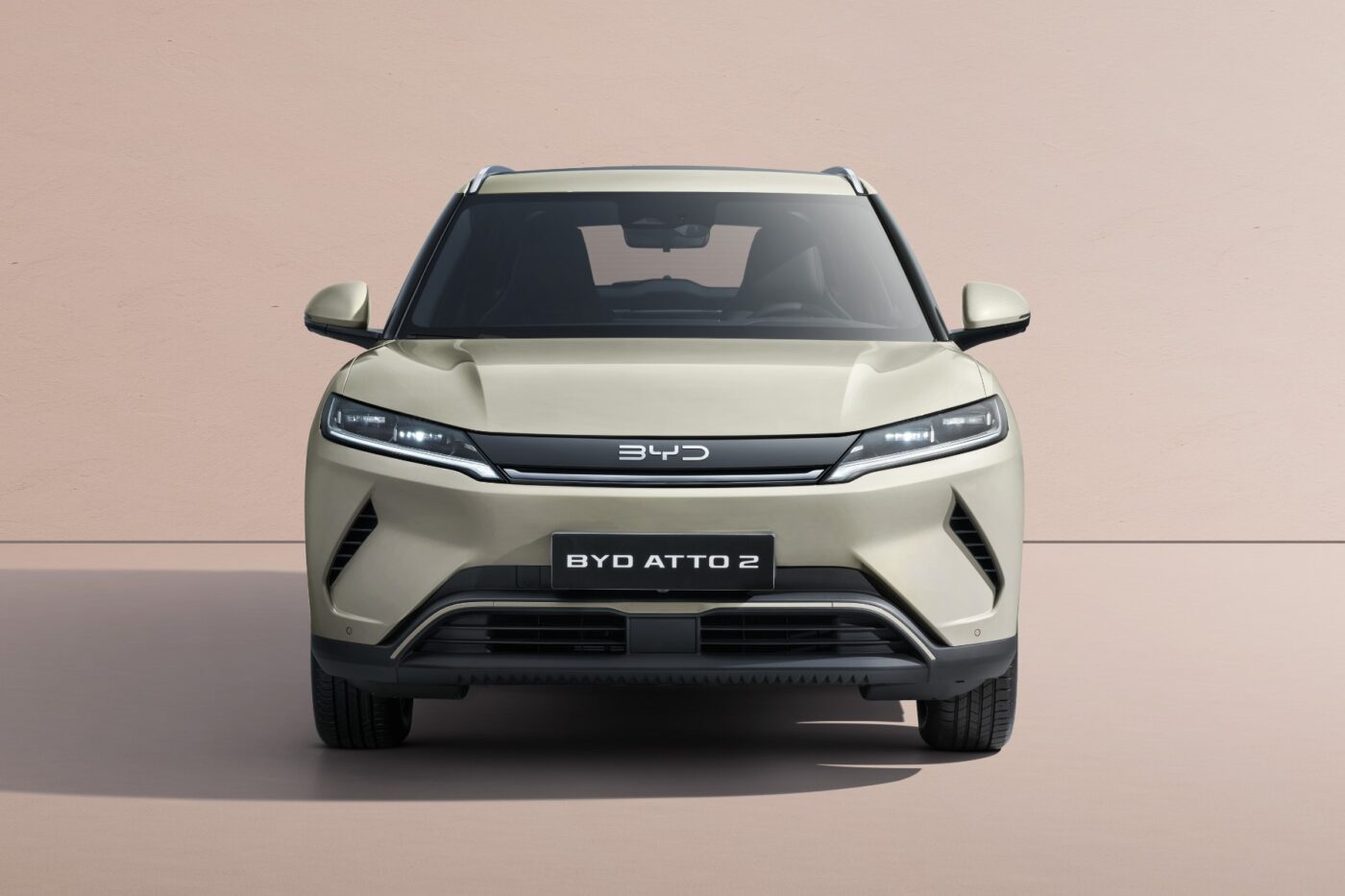
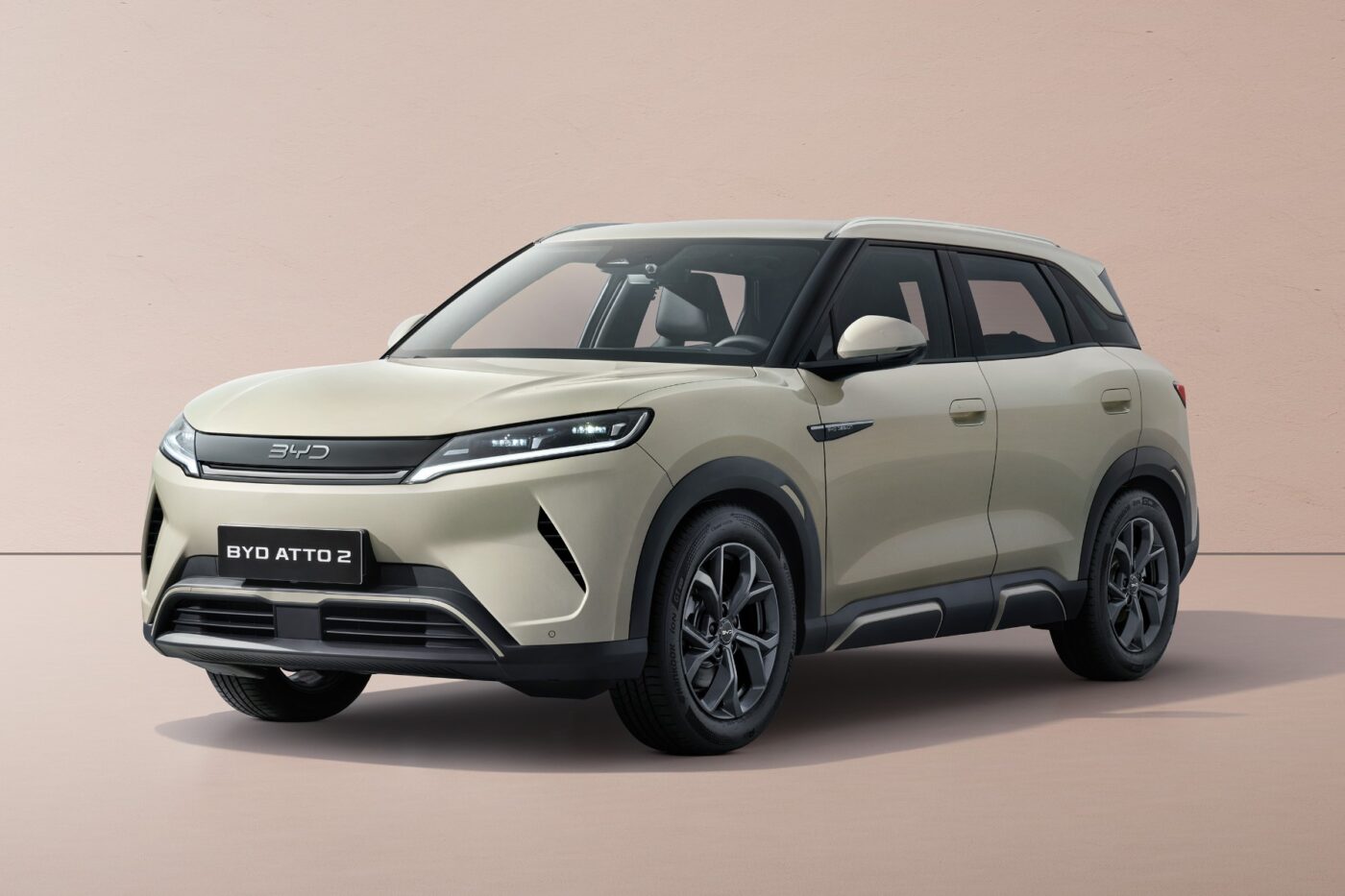
The Atto 2 (Yuan Up) may also celebrate its Indian debut at Auto Expo 2025. According to an Autocar Professional report, BYD wants to launch an EV in the range of 15-25 lakh Indian rupees (about 17,000 to 28,000 euros), and the Atto 2 (Yuan Up) looks like a strong contender to meet this objective. The sub-compact SUV would compete with Hyundai’s Creta Electric, Maruti Suzuki’s e Vitara, and Tata Motors’ Sierra.ev. In Europe, BYD plans to launch the Atto 2 with a 130 kW front-mounted motor and a 45.1 kWh battery pack that returns a WLTP range of 312 km next month.
VinFast
Vietnamese automaker VinFast will make its Indian debut at Auto Expo 2025. The company is building a local plant in the southern state of Tamil Nadu and expects to commence production of EVs there in the middle of the year.
The VF 3 is a two-door, five-seat electric microcar with a length of just 3,114 mm. VinFast initially said it designed the VF 3 specifically for Vietnam, but in September last year, the company started offering it in overseas markets beginning with the Philippines. The company uses a 32 kW motor and an 18.64 LFP battery pack in this model. The electric microcar accelerates from 0 to 100 kph in a leisurely 19.3 seconds and travels up to 210 km on a full charge, as per NEDC.
The VF 7 is a compact SUV that could compete with Tata Motors’ Harrier.ev in India. In Europe, VinFast offers this model in 150 kW single-motor FWD and 260 kW dual-motor AWD variants with a 75.3 kWh battery pack, which gives it a WLTP range of 450 km and 431 km, respectively. The company has already developed its right-hand drive version and manufactures it at its domestic plant in Hai Phong.
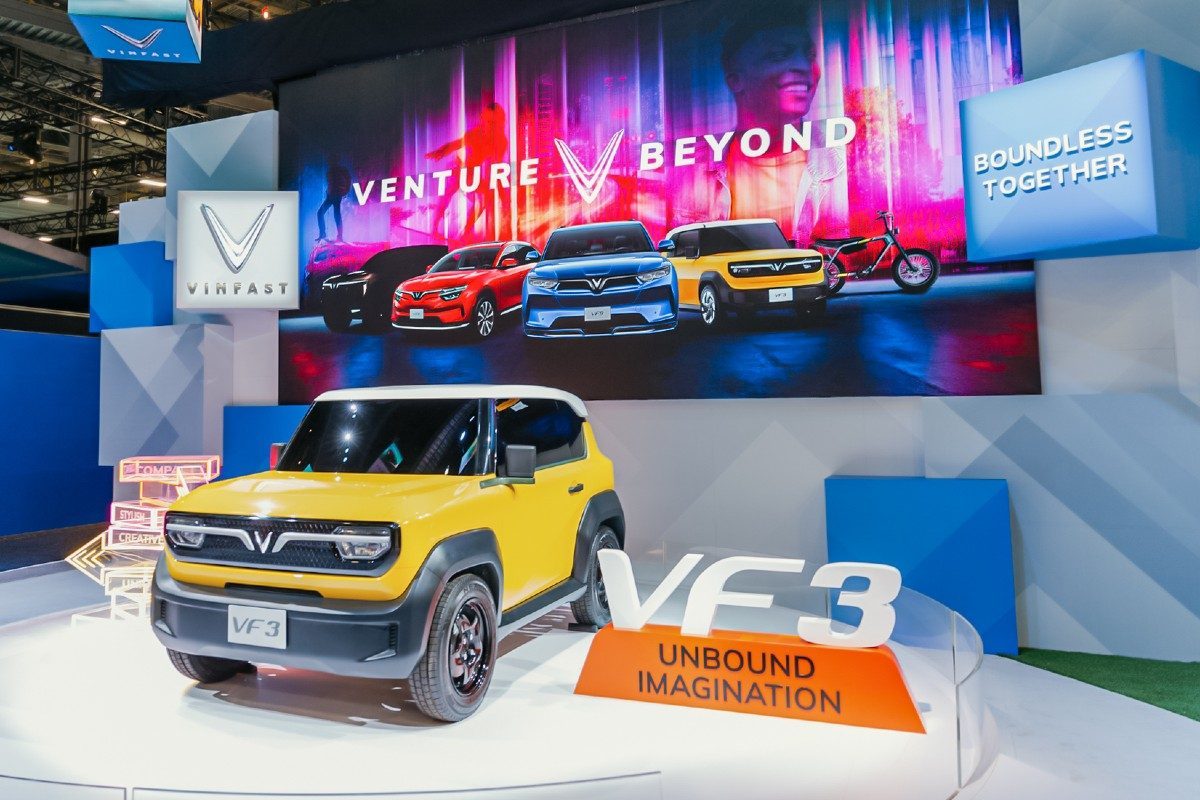
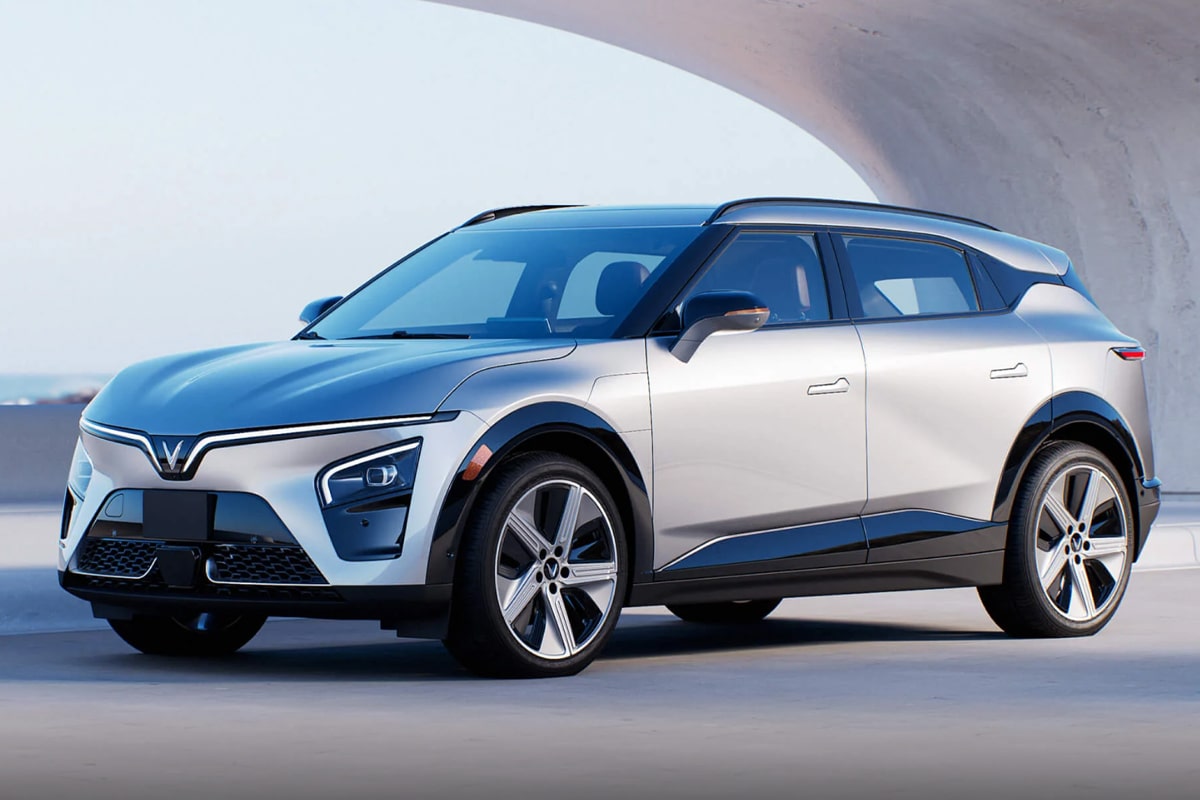
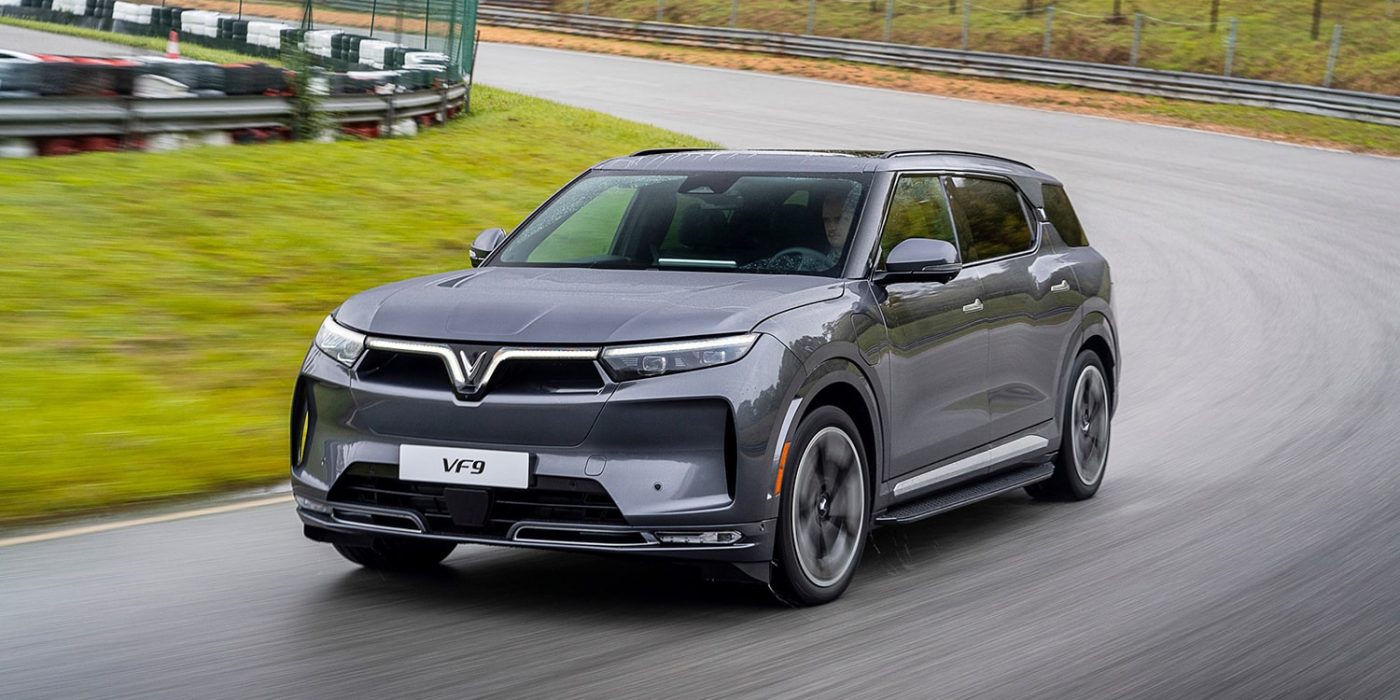
The VF 9 is a large three-row SUV like Kia’s EV9 and Hyundai’s Ioniq 9 targeted at big families. Internationally, VinFast sells it exclusively with a 402 kW dual-motor powertrain and a 123 kWh battery pack in 6- and 7-seat versions. According to WLTP, the VF 9 has a maximum range of 626 km. The company equips it with features like powered seats with massage, ventilation, and heating functions in the first and second rows, a 15.6-inch touchscreen infotainment system, a three-zone automatic climate control system, a 13-speaker sound system, an 8-inch rear touchscreen, and a 90-watt USB Type-C port.
team-bhp.com (Tata Harrier.ev), autocarindia.com (Tata Sierra.ev), www.autocarindia.com (Hyundai Creta Electric), moneycontrol.com (Hyundai HE1i), carnewschina.com (IM L6), autocarpro.in (BYD Atto 2)

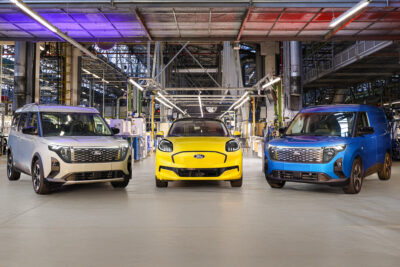

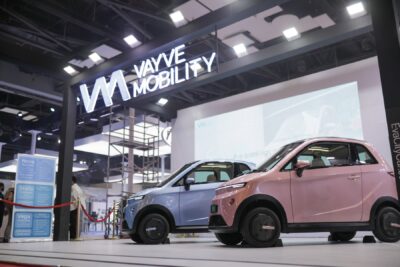
0 Comments